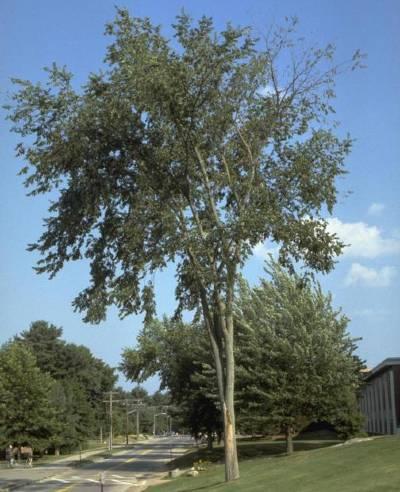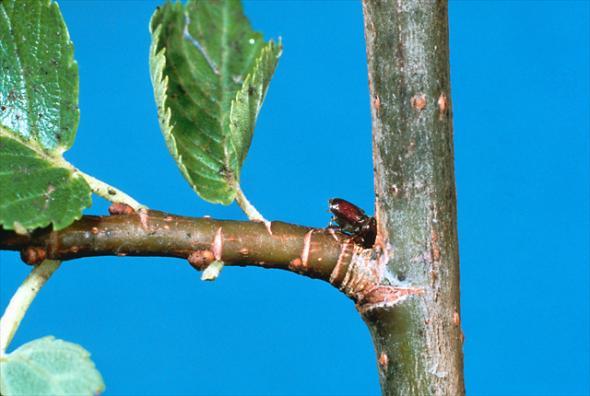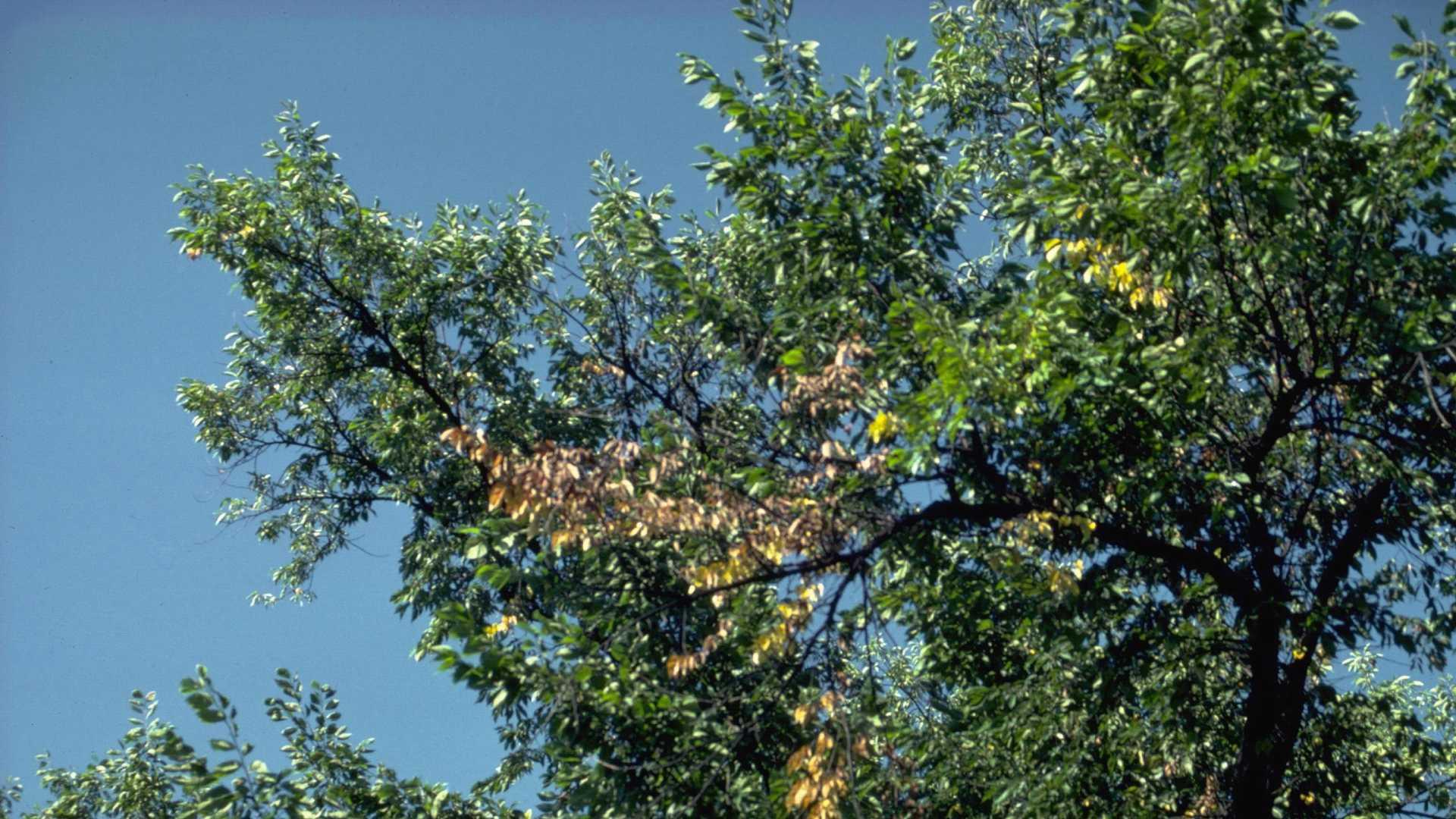Key points
- Dutch elm disease is a serious lethal disease that infects a large number of elm species including American, winged, slippery, rock, and September elms.
- Symptoms typically appear in May as wilted branches that show yellow, then brown, leaves.
- Dried leaves may remain attached to the branches or may fall, leaving bare twigs.
- As symptoms progress, entire limbs may show wilt symptoms and once the infection reaches the trunk the entire tree may wilt.
- In older trees, wilt symptoms may progress throughout the canopy for several years before death occurs.
- Infected twigs and branches typically show vascular streaking under the bark.

Dutch elm disease.
Photo: C. Kaiser, U. of KY, Bugwood.org

- This fungal disease enters through feeding wounds made by the native elm bark beetle and the more prevalent, smaller, European elm bark beetle (see photo).
- Beetles breed beneath the bark of dying or recently dead elms.
- Infected or stressed trees actually emit an odor that attracts beetles to them for breeding and egg laying.
- In addition, female beetles also emit attractants that lure additional beetles to declining trees.
- There are up to three generations a year with the first emergence starting in April from overwintering larvae.
- Beetles that emerge from infected trees typically are covered with fungal spores growing in the pupal chambers.
- Beetles flying to other trees spread the spores to other trees.
Management
- The chief strategy for control of Dutch elm disease is through early removal of newly infected branches to interrupt the spread by elm bark beetles.
- Ideally, removal should occur within two to three weeks after symptoms appear during the growing season.
- Diseased wood should be chipped and removed from the site.
- Pruning cuts should be made at a branch fork at least 10 feet below visible streaking in the sapwood.
- Pruning will be most effective if less than five percent of the crown is affected.
- High-value trees may be appropriately injected with systemic fungicides, administered by a licensed arborist. This is expensive and may need to be repeated in one to three seasons. If injections will be used, prune after the injections are complete.
